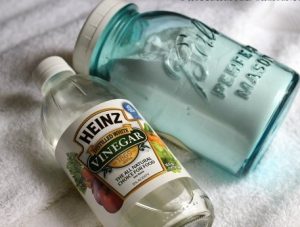

There comes a time when your favorite hat needs a good cleaning. But before you start, take time to look at the little tag on the inside to get an idea of the fiber content and the manufacturer’s cleaning instructions. Of course, your tag may be gone or unreadable so, we’ll cover instructions for safe cleaning of almost any type of baseball cap.
Newer baseball hats are often made of cotton twill, cotton polyester blends or jersey mesh. These fabrics are strong and durable and usually colorfast. New hats use a plastic form to shape the brim, not cardboard. These plastic forms can withstand a wash without becoming deformed.

To clean, pre-treat exceptionally dirty areas like sweatbands with a solvent-based spray or gel like Shout or Spray ‘n Wash or a bit of heavy duty laundry detergent like Persil or Tide. These detergents have enough enzymes to break apart body soil and oil grime. Wash the hat with the rest of similarly colored clothing on the delicate cycle using cool water. Do not use bleach. If you are very concerned with protecting the shape of the hat, you can use a specially designed hat form and toss it in the washer.
Allow the hat to dry in the form or over a large coffee can or other head-shaped container. Do not put baseball hats in the dryer because excessive heat and tumbling action can distort the hat’s shape.
If the hat has a cardboard or paper filled bill, you will have to do spot-cleaning only. Use a soft-bristled brush and scrub the stained areas with a heavy-duty detergent/water mixture. Do not over wet the area. Blot with a clean white cloth dipped in water. Allow to air dry. You may need to repeat the steps several times.
You’ve probably heard of washing hats in the dishwasher on the top rack. I wouldn’t recommend this because dishwasher detergents are harsh and often contain bleach that can ruin your hat. Also, the high temperatures aren’t good for the fabric and may cause the hat to shrink.
Cleaning Newer Wool Baseball Hats
Wool baseball hats should be hand washed using cool water and a mild detergent designated for wool. Be gentle and don’t scrub or twist the fibers. Rinse well in cool water and roll gently in a thick towel to absorb most of the moisture. Allow to air dry on a head-shaped object. If you dry your wool hat on your own head, it will dry to the precise shape of your head and cause it to be too tight.
Cleaning Older or Commemorative Baseball Hats
Commemorative hats should always be stored in a covered case to prevent dust and grease from accumulating on the hap. These should only need a light dusting or brushing to keep them at their best. Always store away from direct light and intense heat.
If a deeper cleaning is needed, first do a colorfastness test. Using a white cloth with a bit of mild detergent, gently rub an inconspicuous area of the cap.
If there is color transfer, do not proceed. If it is colorfast, continue using the cloth to clean the entire hat. Do not immerse the hat in water. The bill may be shaped using cardboard that will dissolve. Rinse your cloth in clean water to “rinse” the hat. Air dry on a head-shaped container.
If you have an autograph that you want to preserve, keep the hat in a dark, air conditioned space to prevent fading and mold or mildew from forming. If you want to wear the autographed hat, protect the signature by covering the signed area with a white, pressing cloth and iron the area on high heat. This will help set the ink.
Read More �6 Ways to Cut Down Energy Costs In The Summer�




























